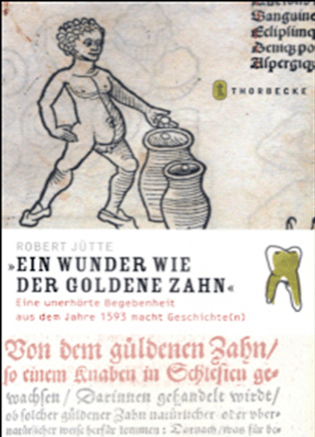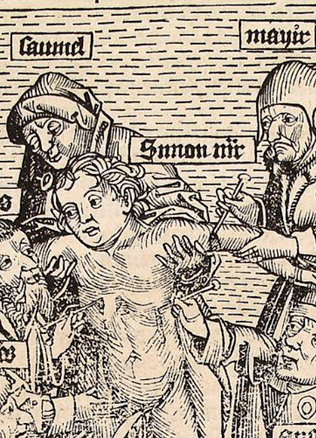Myths About Barbara Radziwiłł
The Queen of Poland and Lithuanian Grand Duchess Barbara Radziwiłł (c. 1522-1551) is still the most well-known historical woman of Lithuania of all times in the historical consciousness of Lithuania. The fascination in her personality, her difficult and tragic life, and so brief triumphant crowning as queen is etched not only into the cultural history of our country, but other countries that adopted the historical heritage of the Grand Duchy of Lithuania. In the historical works, literature, cinema, theatre and opera from Belarus, Ukraine and Poland, Barbara is presented as the famous and beautiful women in their respective country.
A royal drama of love and death electrified the imagination for centuries
Barbara Radziwiłł came from the Radvila family, which belonged to the political elite of the GDL. She attracted the attention of the King of Poland and Grand Duke of Lithuania Sigismund Augustus (1520-1572) with her charm. Their mutual feeling of love was strong. Augustus, disregarding dynastic and political interests, not only married Barbara, but was ready to sacrifice his crown for her. Thanks to his arduous effort, Barbara was crowned as the queen of Poland in 1550. Her triumph lasted but four months. She died the next year on May 8th in the Wawel in the hands of her loving husband. He gave much energy to his wife in fulfilling her wishes, he also fulfilled her last wish, which was to be buried not in Cracow, but in her home city of Vilnius, where she spent her youth, and where she met the only love of her life.
This great love is remembered by the inscription on a silver plaque put in her coffin: “She died without time, but even if she would have reached old age, Augustus would say she had died without time.”
The exceptional love story, secret wedding, and uncharacteristic fight for the throne due to his wife and tragic death of 29-year-old Barbara set the imagination of many artists on fire. A legendary story of Barbara Radziwiłł, which has departed from reality, has formed through the more than 450 years after her death due to conflicted aspects in the life story of the queen and the lack of sources, with various inaccuracies and myths becoming entrenched.
The “dark” myths: spells and adultery
Her contemporaries, who were fighting against the recognition of the royal marriage in 1548-1549, began creating “dark” myths concerning Barbara’s adultery and the person who poisoned her. There were anonymous authors who slandered the duchess and depicted her as a witch and adulterer in the many pamphlets circulating at the time. One could find motifs of Barbara’s love spells and potions on the king’s heart.
These stories reflected the then negative view toward marriage out of love.
It was not understood, riling and angering her contemporaries. There were merciless verdicts about Barbara’s “depravity” and even incestuous relations proclaimed in these pamphlets. The queen’s predilection for her loose lifestyle was supposedly from her mother, while various men from all social strata were suspected to be her lovers, from senators to servants. This myth appeared to be resilient. Twentieth century Polish historians retold this myth in somewhat different clothing. They claimed, without even having found arguments, that Barbara’s unfaithful behaviour came from her relaxed upbringing as a child, and that this kind of behaviour was characteristic of GDL nobility, especially those of the Radziwiłł family.
The “white” myths: a sacrifice for the homeland
In the 18th century as the threat of the state was threatened with disappearing and people began idealizing the extinct Jagiellonian dynasty, the so-called “white” myth of Barbara began taking root. Poets and historians canonized her as the “Mother of the Homeland” and as a victim. This idealized Barbara was put forth in Juozas Grušas’ drama Barbora Radvilaitė (1971), which formed the image of the queen in Lithuanian cultural history. She was a symbol of freedom, a fighter that gave her crown to her homeland, a victim: “Be free throughout the centuries, oh Lithuania”; “Oh Lithuania! My love! Punish me, if there is but a drop of blood among the diamonds.” This portrait of the queen has diverged from the historical truth. Thanks to this royal marriage, a foundation was formed for the might of the Radziwiłł in Lithuania, however the queen did not become a tool of theirs and was not a victim. As was typical for female rulers of the time, she participated in public life based on her opportunities, and on several occasions advised various clients.
Barbara’s erudition and mysterious premature death
Barbara’s education and her erudition are often idealised, and it is written that she knew several foreign languages. That is yet another myth, though one that is very pleasant. She did receive a rather good education at home and knew Polish and Ruthenian very well. However, she did not know Lithuanian, Latin or Italian, and could not have known it.
Barbara’s death is shrouded in myth. There were different versions that spread soon after her death. Some thought that Queen Bona Sforza poisoned her, while others claim that Barbara was ill with a venereal disease and that she infected the last Jagiellon with it. Medical experts put forth the hypothesis that she died due to an incurable tumour. This question was answered almost 400 years since Barbara’s death, upon finding and carrying out tests on her remains. Now it is thought that the cause of her death was cancer (or endocervicitis).
The queen’s ghost in the historical imagination
In Lithuania, there are still resilient myths about the Painting of Our Lady of the Gate of Dawn, which was supposedly painted based on a portrait of the queen, or the swans that came to Lithuania as a luxurious gift of Sigismund Augustus to his beloved wife. Art history researchers have not found historical ties between the portraits of Barbara and the Mother of God, while the swans, considered a symbol of love, are migrating birds, thus they live according to the rules of nature, and not the wishes of man. Their presence in the GDL was recorded already in the Early Middle Ages. There are less significant myths linked to Barbara. For example, it is said in Belarus that the ghost of a grieving Barbara lives in Nyasvizh Castle.
It is true that Sigismund Augustus, who was interested in astrology, really did try to banish the queen’s spirit, inviting the help of a certain Tvardowski, who knew magic. What he really saw remains a mystery, just like the fate of the queen’s pearls, which are shrouded in mystery.
Supposedly they ended up among the treasure of English rulers in some manner, and in the 20th century were kept on manor estate in Hannover. Now nothing is known of them. The popular portrait of Barbara decorated with a plentiful amount of pearls (from the Monkiewicz manor estate) does not reflect her real features and is but yet another idealised image of her.
Thus, both the myths that have been disproved as well as those still existing concerning Barbara Radziwiłł show a great interest in this figure. Though the Barbara that is attacked or exaggerated too much in these myths makes her less real, it is clear that society needs a mythologilized story. The real drama of life, though extraordinary, is not enough.
Bibliography: R. Ragauskienė, Barbora Radvilaitė, Vilnius, 1999.
Raimonda Ragauskienė



